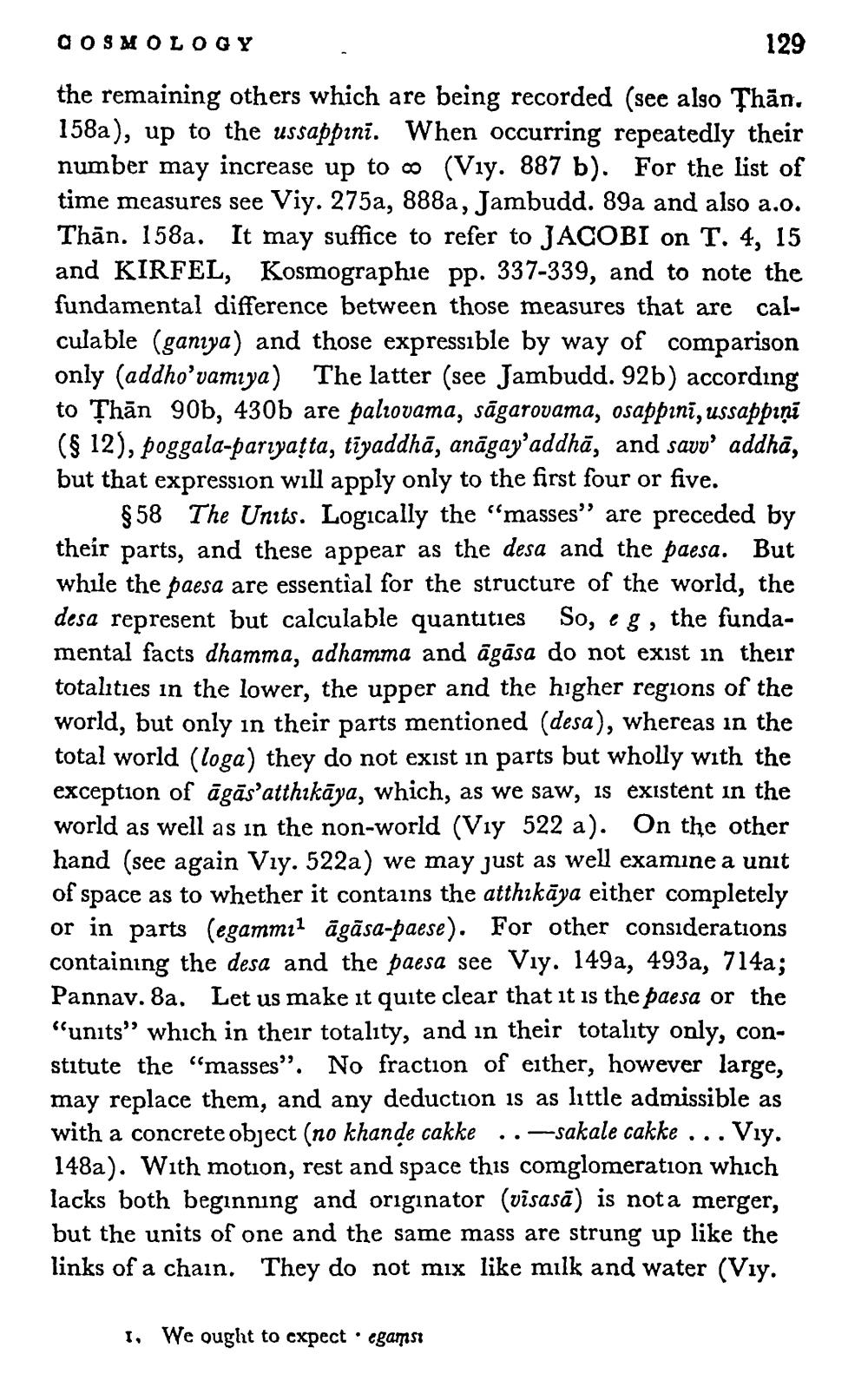________________
DOSMOLOGY
129 the remaining others which are being recorded (see also Thān. 158a), up to the ussappınī. When occurring repeatedly their number may increase up to co (Viy. 887 b). For the list of time measures see Viy. 275a, 888a, Jambudd. 89a and also a.o. Thān. 158a. It may suffice to refer to JACOBI on T. 4, 15 and KIRFEL, Kosmographie pp. 337-339, and to note the fundamental difference between those measures that are calculable (ganıya) and those expressible by way of comparison only (addho'vamıya) The latter (see Jambudd. 92b) according to Thān 90b, 430b are paliovama, sāgarovama, osappini, ussappini (§ 12), poggala-pariyaţta, tīyaddhā, anāgay'addhā, and savo' addha, but that expression will apply only to the first four or five.
$58 The Units. Logically the masses" are preceded by their parts, and these appear as the desa and the paesa. But while the paesa are essential for the structure of the world, the desa represent but calculable quantities So, eg, the fundamental facts dhamma, adhamma and āgāsa do not exist in their totalities in the lower, the upper and the higher regions of the world, but only in their parts mentioned (desa), whereas in the total world (loga) they do not exist in parts but wholly with the exception of āgās'atthikāya, which, as we saw, is existent in the world as well as in the non-world (V1y 522 a). On the other hand (see again Vıy. 522a) we may just as well examine a unit of space as to whether it contains the atthikāya either completely or in parts (egammı? āgāsa-paese). For other considerations containing the desa and the paesa see Vıy. 149a, 493a, 714a; Pannav. 8a. Let us make it quite clear that it is the paesa or the "units” which in their totality, and in their totality only, constitute the masses”. No fraction of either, however large, may replace them, and any deduction is as little admissible as with a concrete object (no khande cakke ..--sakale cakke ... Viy. 148a). With motion, rest and space this comglomeration which lacks both beginning and originator (visasā) is not a merger, but the units of one and the same mass are strung up like the links of a chain. They do not mix like milk and water (Viy.
1, We ought to expect . egaması




